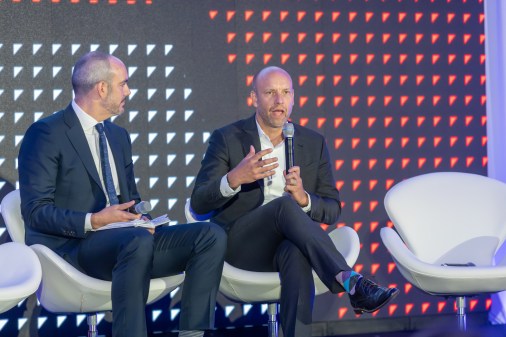Mary Davie: EIS transition overrun can’t happen

The General Services Administration cannot exceed the three-year window it has set to award contracts under its $50 billion next-gen Enterprise Infrastructure Solutions telecom vehicle and to transition agencies away from the preceding Networx vehicle, the GSA official leading the charge on the new contract said Wednesday.
For a variety of reasons, the last time GSA faced such a monumental transition — moving from the FTS2001 contracts to Networx, beginning in 2007 — it took six years, Mary Davie said at Next-Gen Network Summit produced by FedScoop. GSA will award contracts under EIS, which will account for more than $2 billion in managed federal network services spent each year, sometime in spring 2017.
“We can’t go beyond three [years] this time,” she said. “We have extended the [Networx] contracts on purpose up front this time to give a deadline. We didn’t do that last time and it caused issues.”
“We learned a lot of lessons the last time, and we’re taking this very seriously,” Davie added.
With those lessons in mind, Davie and her GSA team began working with agencies a few years ago, creating transition timeline templates that align with the goal of moving from Networx to EIS in early 2020. Most agencies have completed those timelines. “We’re now working with agencies to make sure they’re as complete as possible,” Davie said.
That’s no little task, however. There’s a lot to boil down before 2020.
“What we’re encouraging agencies to think about is what emerging technologies are available, how would they lower the total cost of ownership, and how do you then include that in transition?” Davie said. “This transition represents not only a lot of risk but also a lot of opportunity. We’ve been encouraging the agencies to really look at how they can modernize their networks, take advantage of new technologies and services, really improve the cybersecurity posture, and, again, continue to achieve significant cost savings.”
It’s also a 15-year contract to consider. “This program’s going to go on through 2032. … We can’t possibly know where we’re going to be in 15 years in the technology world; we all know that,” Davie said. But they’ve built the contract to be flexible, with only four mandatory services. The other services are optional with an area for “emerging technology to take us over those next 15 years.”
“While the contracts are not awarded yet, there’s a lot of work that should be going on with the agencies talking to industry … to figure out what options [they] have to move out of maybe a current legacy environment to something new and different,” she said. That is, agencies should be looking for opportunities to “transform” while they transition, she said.
Plus there are eight million line items to move off of the Networx contracts, Davie explained. And based on agency timelines, it looks like there may be in excess of 100 task order requests to be filed against EIS.
“In the three-year window, if we have the hundred or so task order requests, I’m not sure how we’re all going to be able to support that transition through all of those different things,” she said. “I think it’s important that the agencies sort of stick to what’s been defined at a contract level where we can … not try to customize too much, and look for opportunities to consolidate requirements.”
But Davie said officials have to be “cautiously optimistic” about making the transition a success and keeping it front and center for the next few months until awards are made and changeovers occur — which won’t be easy with another transition creating big distractions in Washington right now.
“We’ve got a big transition happening and this transition happening — a lot of work to be done, a lot of things to focus on,” she said, referring to Donald Trump’s presidential ongoing and relatively chaotic presidential transition. “But we’re going to get through it. … It’s just making sure that it stays high on the radar and in front of people.”
GSA even has another transition on its mind — the one that will inevitably come when EIS expires.
“I thought that was really important, that we start to look at how we do that next time, and then again how to do it differently,” Davie said. “My personal hope is we’ll see agencies taking more and more advantage of things like managed services and software defined networking, the types of things that get us out of owning a lot of stuff and a lot of hardware.”
The key questions will be, “At the end of the day, are you getting services delivered? Are citizens getting what they need form the agencies?” she said. “That would also help smooth and ease transition in the future.”






